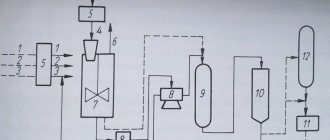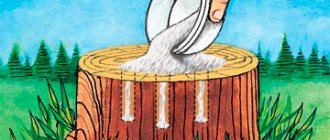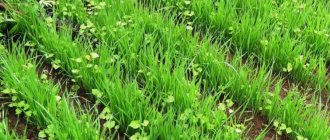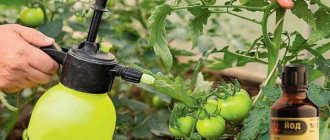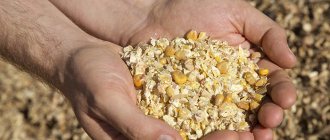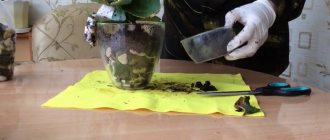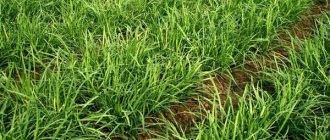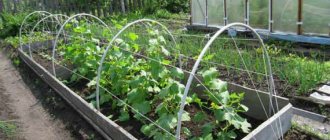A bull needs horns to protect itself and hit the enemy with them. Not everyone can just come up to him and pet him. After all, it is not known how an animal can behave, and if you are unlucky and it goes to attack, then in this case fast legs and the instinct of self-preservation will not help.
But horns serve not only as weapons for attack, but they also make beautiful and useful products that will decorate any home.
Horns and their structure
The horns of a bull are a protective covering for the processes of the frontal bone. They have a root, a body and an apex. The apex is the sharp end of the horn, and the body is the gap from the base to the top.
The shell of these hard processes has two layers - the base and the epidermis. The epidermis layer produces the tubular stratum corneum. The length of the horns reaches 70 cm, with a diameter at the root of up to 30 cm. As a rule, they grow in a spiral, but often bend into an arc.
The horns are very smooth to the touch, with barely noticeable annual rings. There are many shades of gray. In some cases there are spotted antlers, with a beautiful iridescent decoration.
The horns of large bulls and oxen are highly prized.
Why do bulls need horns?
Why is it so important for a bull to have large horns? Because they perform important functions:
- status;
- protection.
Horns are also used in battle with the same bulls. They use them to fight for their territory, food and cows.
Do damaged antlers grow back?
Bulls can damage their horns in the process of arguing with their horned brothers. But it happens that they themselves accidentally cause damage to them. When only the shell of the horn is damaged, it is then easily restored.
But if the damage is more serious and occurs at the root of the horns, then the consequences can be painful and will certainly lead to an undesirable result. Bleeding may occur and fill the bull's nasopharynx. Then it is only necessary to remove the horn to preserve the health of the animal.
Bulls are without horns only in the first months after their birth.
You can not only cut down
Veterinary medicine in 2021 knows several options for removing cow horns:
- sawing;
- fixation;
- chemical treatment;
- thermal method.
When cutting down with a veterinary saw, the place where the antlers were is treated with antiseptics - this stops the bleeding and ensures safe healing of the tissue.
If it is necessary to carry out the procedure bloodlessly, they use clamps that compress the vessels. As a result, due to lack of nutrition, the horn itself is rejected.
The third method involves chemical treatment of the rudiments of bone processes in calves with caustic potassium or sodium, as a result of which the tissues are not restored and the horn does not grow.
And finally, the most popular due to its simplicity, speed and safety is the thermal method. It involves cauterizing the horny rudiment. This happens quickly, in 3-4 seconds, and does not pose a threat to the life of the animal.
One of the methods often has to be resorted to in case of serious injury.
If a cow breaks her horns, she needs urgent veterinary help. As a rule, the owner does not know what to do with the horn in order to properly remove it, so you should immediately contact a specialist.
Read also: Duroc pigs: we give valuable advice
Before removing a broken horn, the doctor administers anesthesia and, when the bleeding has stopped, files down the fracture site. Then he applies bandages with healing and disinfectants to the injury site. They are changed regularly until the wound is completely healed.
If you liked the article, please like and share it with your friends. Leave your opinion in the comments.
Which bulls have more horns
The bulls with the largest horns are the Watussi breed. They have hard outgrowths that sometimes reach a length of more than 2 meters. The weight of each of them can be up to 45 kg, and the distance between the ends is up to 2.5 meters.
As a rule, these bulls have straight horns, and in rare cases slightly curved ones. These solid formations also have a cooling function, because the blood entering them is cooled and returned to the body. This is very important, since in Africa, where the Watussi appeared, it can be very hot and the temperature reaches more than 50 degrees.
Good to know! The mountaineers have a tradition: if a boy is 16 years old, he must drink wine that was poured into the horn of an animal. When these conditions are met, the young man becomes a man in the eyes of his loved ones.
Slaughter
Meat yield primarily depends on the average weight of animals. A cow weighs on average between 300-450 kg, bulls are slightly larger - up to 850 kg. The weight of livestock is divided into the following categories:
- Class A is a selected category, this includes individuals weighing from 500 kg. Such meat is sold in small wholesale in markets and stores.
- Class B - first grade. The weight of cows here should be 400-500 kg. Such an animal has a proportional physique; protruding shoulder blades and spinous processes of the vertebrae and ischial tuberosities are not visible. A castrated animal has a uniform layer of fat throughout its body.
- Class C - second grade, animal weight up to 450 kg. The animal is distinguished by satisfactory body development, slightly angular, with slightly protruding shoulder blades. The fat layer is found only in some places.
- Class D - third grade. Cows do not weigh more than 300 kg. Such animals are distinguished by underdeveloped muscles, all the bones of the skeleton are clearly visualized, and there is no fat layer at all. Individuals in this category are rejected and are rarely slaughtered.
Important! If a cow carcass does not fit into any of these groups, such meat is branded with a triangle.
To obtain young veal, calves are also sent to slaughter. To do this, at the age of 3 months they are tested according to external indicators, its purpose is to determine the approximate meat yield.
As already mentioned, the weight of the animal and slaughter weight depend on many factors, which include:
- Hereditary qualities. All of them are determined by the characteristics of a particular breed and its orientation.
- Animal health, age and gender, natural purpose.
- Quality of food and living conditions of the individual.
- The climate in the region where the cow lives.
How to treat a bull's horn at home
Mountain dwellers use the horn as a container from which they drink various drinks. The appearance of such dishes inspires you to make it yourself. All that remains is to find out how to implement this idea.
They even found use on the farm.
On the farm, people found no less practical use for them: it turned out to be convenient to tie the animal by the horns during milking and grooming. A fixed head calms the cow, making it easier for the owner to milk, wash, comb or treat her.
Some scientists believe that horns help a cow attract a bull. Perhaps this is due to the fact that he perceives a partner with horns as a healthy individual capable of producing offspring.
It is interesting that people even came up with a way to use horn covers in everyday life: large horns were skillfully turned into musical instruments or home decorations.
In addition, cow horn material was used to make sewing needles, buttons or combs. Girls have always liked jewelry made from them on their necks, arms or hair. Now archaeologists are finding many options for tools that ancient people made from these bone processes.
Getting rid of the bone core
An important point is the removal of the bone rod. If you cannot detect it, you can cut off the edge of the horn. But even if it is noticeable, a procedure will still be required to remove it from the case.
The horn is soaked, but as a rule this action takes 15-20 days. You can speed up the process and boil the horn. But this will be a very unpleasant procedure, since it entails a nasty smell. Therefore, you need to open all the windows and wear a respirator.
Need to know! To boil the horns, it is better to use unnecessary dishes. Because after this operation, it will be impossible to use it.
The horn is boiled for approximately 2-3 hours. When this time has passed, you need to take it out and knock on a wooden surface until the rod itself falls out. For the same purpose, you can use a thin iron rod and use it to clean everything inside.
Feeding cows: norms, daily diet, additives, feeding and advice on choosing feed composition (110 photos)
Insemination of cows: types, recommendations, description of technology and step-by-step instructions for artificial insemination at home (130 photos)
Cow meat: composition, properties, characteristics and features. Tips for raising cattle and producing beef (120 photos)
Feeding a cow
Drinking modes
The water content in a cow's body is 60%. An animal can live no more than 4–8 days without water, while without food it can last 30–40 days. The water temperature for watering adult cows should be no lower than 10–12 C, and for young animals 15–30 C, therefore, when watering animals on the street, it is necessary to install heated drinking bowls, or pour warm water into the troughs and ensure that its temperature was in a comfortable range.
The optimal regimen for watering cows when using automatic drinkers is considered to be 12–21 times of watering in small portions. Individual and group drinking bowls are commercially produced. Individual drinking bowls are suitable for tethered housing. Group drinking bowls are used for free-stall and stall-camp pasture housing. When using group drinking bowls, care should be taken to ensure that the drinking front per cow is at least 60 cm.
In the absence of automatic drinkers, cows are watered 3 times a day. Animals drink most readily immediately after milking or feeding.
Every minute a cow's body loses up to 0.6 grams in milk. protein, 0.66 g. fat and 0.8 g. lactose. Such intense loads require timely replenishment of losses with good quality balanced feed.
A high-milk cow should receive about 30 kg. feed per day. The use of group feeders requires providing cows with a feeding front 70–80 cm wide for each cow.
Cow diet
The diet of cows depends on their gender, age and economic group (stud bulls, dairy cows, young animals, fattening calves). In dairy cows, the diet depends on the physiological state of the animal. A distinction is made between feeding during the dry, pregnant and lactation periods.
Breeding bulls need increased feeding. In winter, they are given food 2–3 times a day; in summer, the number of feedings increases and reaches 3–4 times. They use exclusively fresh and high-quality feed, balanced in nutrients, vitamins and microelements.
The main task of feeding stud bulls is to constantly maintain them in factory condition and prevent emaciation or obesity, therefore, during periods of intensive use, feeding rates increase, and when activity decreases, they decrease.
Feeding young animals is particularly complex and varied, due to rapid development and associated frequent changes in diet. In the first 30–60 minutes after birth, the calf needs to drink its mother's colostrum. It is best to bottle feed the baby. Drinking colostrum from a bucket can lead to the formation of a dense clot of colostrum in the calf's abomasum and the development of dyspepsia. In the first days, calves are fed 5–6 times a day, gradually increasing the portion, reducing the frequency of feeding.
During the dairy period, calves are fed with special dietary feed additives (acidophilic yogurt, lysozyme, oat milk, artificial colostrum). During the first 10–20 days, calves are gradually accustomed to eating concentrated and roughage feed, that is, compound feed and hay. Calves are fed milk until they reach the age of 1.5 months, skim milk is given starting from one month of age, hay and concentrates from two months of age, and silage from four months of age.
In total, from birth to 6 months of age, a rapidly growing calf consumes about: 200–250 kg. milk, 400–450 kg. skim milk, 2.5 quintals of hay, 4 c. silage and 1.5 c. root vegetables and concentrates.
Young cows aged 12–14 months or adult animals are put on fattening 70–90 days before slaughter to bring them to condition.
It is necessary to distinguish between fattening and fattening. The first involves keeping animals indoors and actively feeding them for a short period (70 days for adult animals and 90 for young animals). Fattening is fattening done on grazing, most often using the pen method of grazing pastures. Fattening requires less feed than fattening, but takes longer (90 for adult animals and 120–150 days for young animals).
When cows are put on fattening, they are accustomed to new feeds for the first 5–10 days. Very often, agricultural waste is used for fattening: stillage, pulp, potato pulp. In addition, they also provide the usual food for cows: hay, haylage, silage, concentrated and green feed. When fattening on stillage and pulp, you need to carefully monitor the condition of the food, as it can quickly turn sour and cause poisoning.
Normally, an adult cow should receive 60–80 kg daily, and young animals 40–50 kg. bards. In addition to this, additional hay or other roughage is given at the rate of 1–1.5 kg. for every 100 kg. animal weight.
With good feeding and maintenance, fattening young animals should be given 900–1000 grams daily.
Fattening cows are not only actively fed, but also conditions are created for them that further accelerate fattening. Grazing areas are located in close proximity to each other and to watering areas in order to avoid long hauls. Give the animals plenty of water 2-3 times a day.
The diet of dairy cows depends on their condition. During lactation, the cow receives a complete diet consisting of hay, haylage, concentrates; in the summer, green food is added to the diet, and silage is added to the diet in the winter.
When transferring a cow to dry housing, succulent feed is completely excluded from the diet. The supply of concentrates is also significantly limited, giving preference to roughage (hay, straw).
In the period preceding calving, silage is completely excluded from the cows' diet, replacing it with high-quality hay. Feeding cows acidic feed (silage) can cause an increase in fetal acidosis, which leads to tissue hypoxia. If it is impossible to exclude silage from the diet of a pregnant cow, it is necessary to neutralize its harmful effects by adding sugar beets and other root vegetables. Additional vitamin and mineral supplements must be introduced into the diet of calving cows.
Applying decor
The finished product can be grooved, polished or engraved with a pattern. Of course, this requires some experience.
In addition, the vessel is decorated with a chain or lace embossing. And then you get not just a vessel for drinking delicious drinks, but also a decorative element in your own home.
